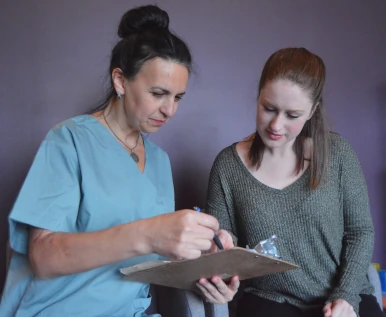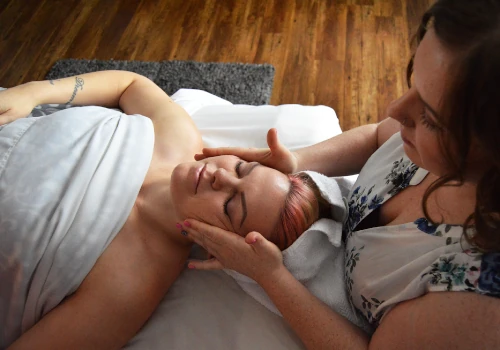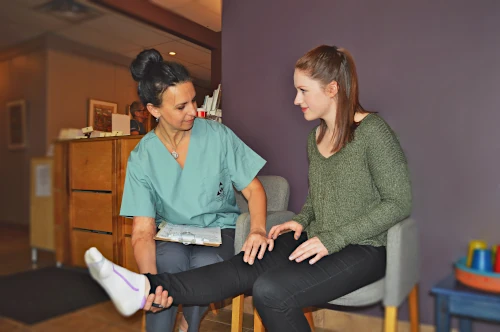What to Expect at Your First Massage Therapy Appointment
Wednesday, February 26, 2020, 07:35 PM
Massage therapy is on the rise as viable treatment for many conditions, from pain to stress and anxiety. With that is some uncertainty about what to expect during a massage therapy session.
There are several things to consider when going to your first appointment, including what to wear, prior conditions or injuries, oils and lotions being used, and most importantly, consent.
Completing an Intake Form
On your first appointment with a professionally recognized massage therapist, you will be required to fill out an intake form. This can take some time, so it is recommended to arrive at your appointment 10 to 15 minutes early.
The intake form collects information about you, including your name and contact information and more importantly, your health history. All information received is kept strictly confidential and can only be shared with a third-party upon your signed approval.

Your health history is extremely important to your therapist because the treatment can change depending on a variety of conditions.
For example, if you have recently taken an anti-inflammatory drug, you may not feel the same level of pain as you would normally feel. In this case, your therapist will need to adjust the pressure levels accordingly to avoid excess pain during your treatment and the days following.
Assessment of Conditions
Once you have completed the intake form, your massage therapist will bring you into a treatment room where they will ask about any recent injuries or health conditions.
Questions will include if you have had a massage prior to the visit, what you currently want to treat, if you have recently eaten, and other factors that may affect your treatment.
During this time, your therapist will work with you to create a treatment plan based on what you have shared with them. Your treatment plan should include specific areas of the body where they will be working and how the draping will be done to ensure you are as comfortable as possible.
At any point, you can tell the therapist what you are comfortable with and what areas they do not have your consent to treat. At this time and throughout your treatment, ask any questions you may have.
Massage oils or lotions are often used during your treatment. Your therapist will ask you if you have a sensitivity to scents or specific oils. If there is anything your therapist didn't ask you about but you feel they should know, make sure to tell them.
What to Wear During Your Appointment
After your massage therapist has finished the assessment and you feel comfortable with the treatment plan, they will recommend the level of undress for the massage. However, it is a common misconception that you need to be fully undressed during a massage.
A therapist will be able to treat you fully clothed if that is how you feel most comfortable. The level of undress during treatment is always up to you.
Your therapist will also tell you how to position yourself on the massage table, and then they will leave the room so you can undress and get comfortable on the table, fully covered by the draping. Draping consists of a sheet and a light blanket that cover you on the massage table.
A common position to start in is lying on your stomach, under the draping, with your face down in the headrest. You may also be asked to lie face-up, under the draping on the massage table.
Your Massage Therapy Treatment
Now that you are comfortable, your therapist will knock before re-entering the treatment room. Let them know if you are not yet in position, and they will give you more time to get ready.
Communication is key during your treatment. Your therapist will check in throughout the session, but you are ultimately in charge. If you are too cold, too hot, want to be covered, are not comfortable with a part of your body being touched, don't like the music, or have any other discomfort, tell your therapist.
Your therapist will use draping to expose the body part they are working at that moment, never exposing breasts, genitals, gluteal cleft, or any body part you specify should remain covered.
While checking in, your therapist will invite you to communicate by asking how comfortable the pressure of your massage is. If at any time you are in pain or would like more pressure applied, let your therapist know.

After some time in your session, you may be asked to shift positions. This can involve turning over from your stomach to your back, from your back to your stomach, or onto your side. Your massage therapist will gently lift the draping, giving you space to adjust and turning away, allowing you to shift in privacy.
After Your Treatment
When your massage therapy session is complete, your therapist will let you know. They will ask you to get up and get dressed after they leave the room, when you are ready. Take your time getting up, as it is common to experience a change in blood pressure when lying flat for a while.
Depending on the reason for the treatment, your massage therapist may recommend additional sessions, stretches, or exercises to maximize the benefit of the treatment.
After you have dressed and met your therapist outside the treatment room, you will be asked for feedback. How are you feeling? Are you still experiencing pain? Upon your response, they may make further suggestions.
At this time, your session with the massage therapist is complete.

If you have any further questions about massage therapy treatments, please contact our Practice Management Team.

